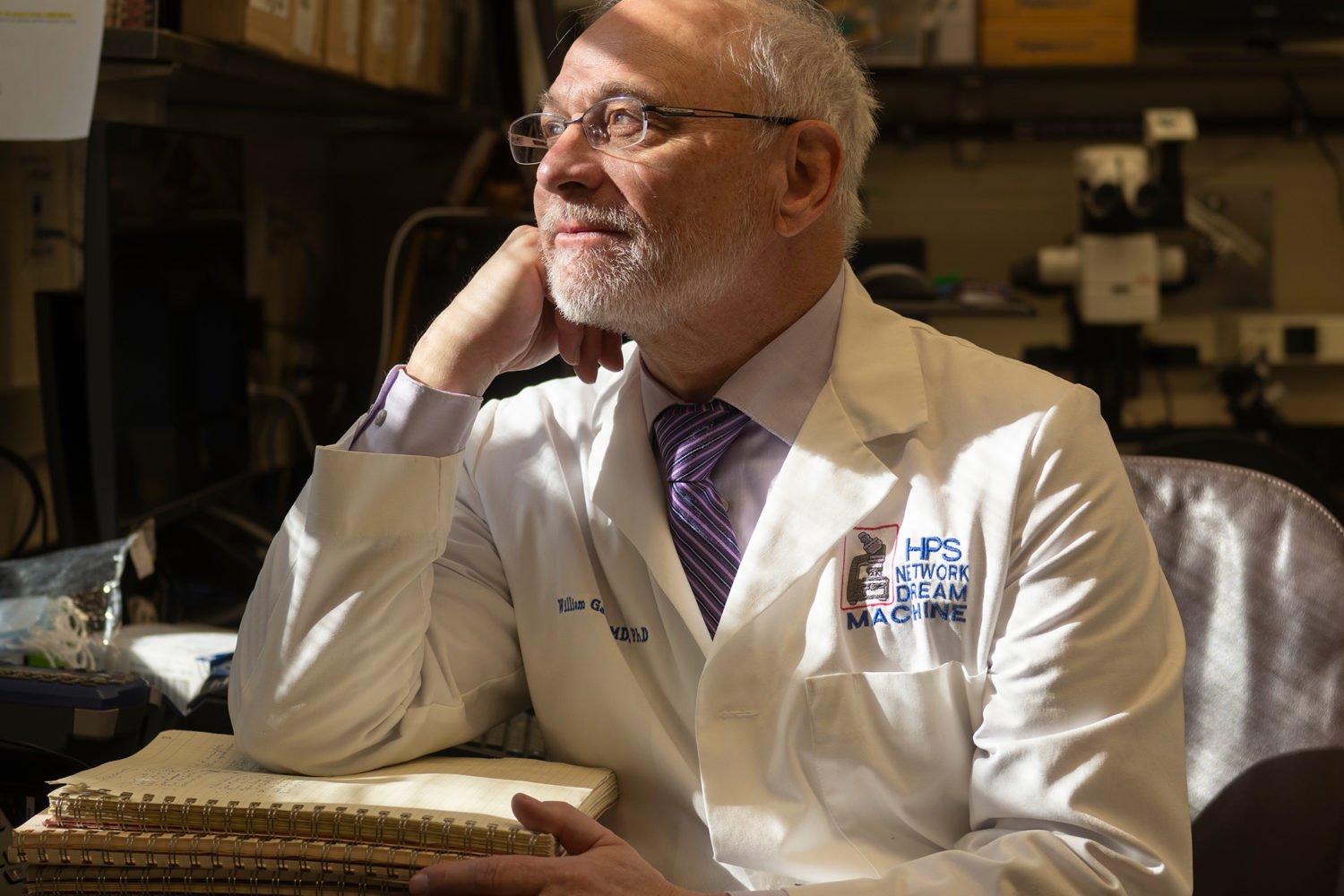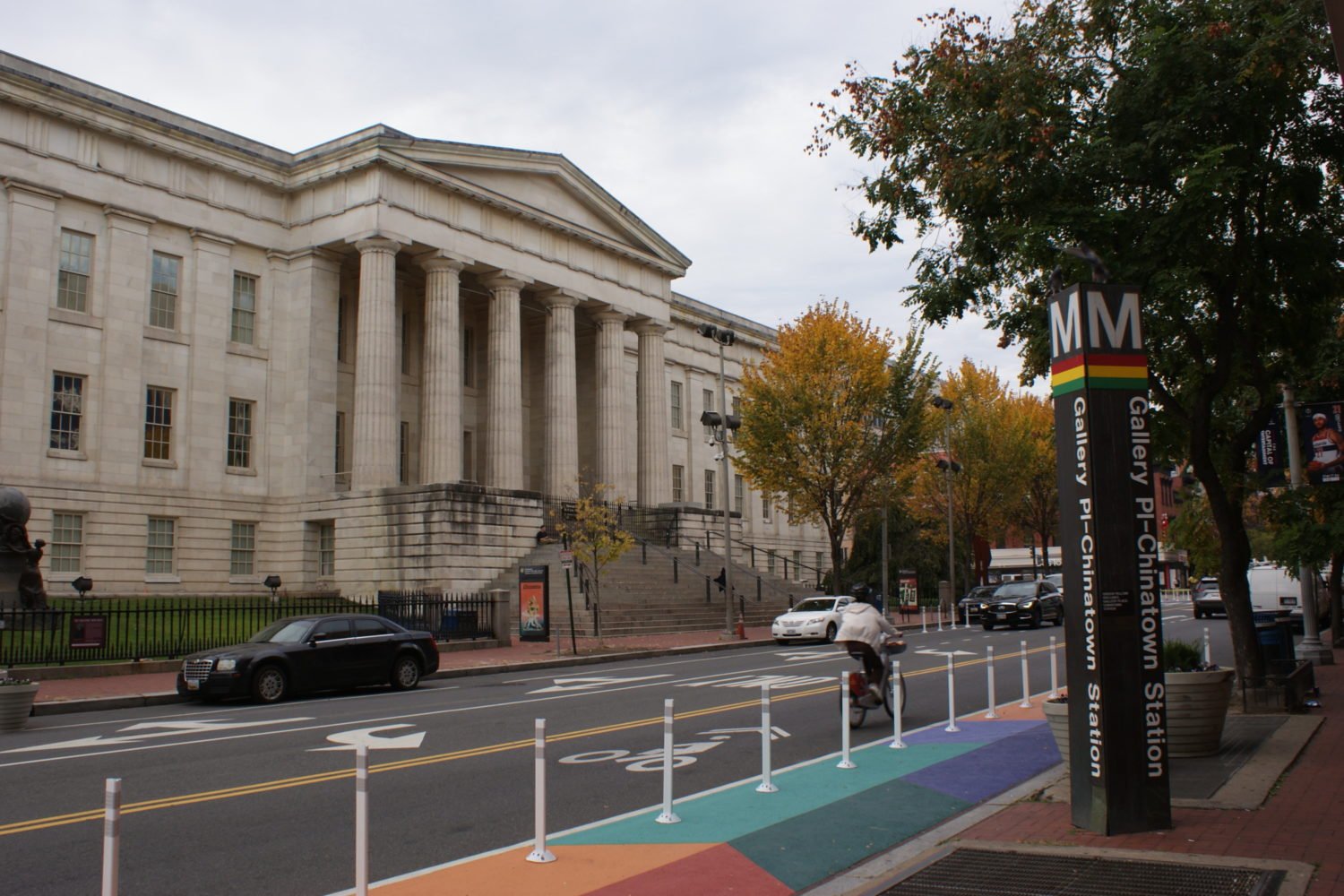The five business leaders named to the 2004 Washington Business Hall of Fame are masters of connection. Former AOL chair Steve Case hooked up millions to the brave new world of the Internet. When John Derrick ran Pepco and Marie Johns headed Verizon, they understood that connection was more than power lines and telephone cables–it was pulling people together to foster a good company and a supportive community.
For banker Robert Pincus and Realtor Wesley Foster, business has always been up close and personal. Both bucked the tide of industry consolidation to keep their businesses local, the better to connect with their customers.
The Washington Business Hall of Fame was founded in 1988 by the Greater Washington Board of Trade and The Washingtonian for the benefit of Junior Achievement of the National Capital Area. Junior Achievement sends more than 650 business volunteers a year into more than 900 classrooms to build knowledge of how business really operates. The volunteers have served as role models for 27,000 kids from kindergarten through 12th grade.
The 2004 laureates will be inducted into the Washington Business Hall of Fame at the Hilton Washington on November 16. The connections they made created a framework for Washington's growth as a center for good jobs and good business.
Steve Case
The Man Who Put America Online
GROWING UP in Hawaii, Steve Case and his older brother, Dan, were entrepreneurs. They sold newspapers, greeting cards, and lemonade. For the lemonade business they thought they'd hit on a winning formula–they took the ingredients from their mother's kitchen, so all revenue was pure profit.
"The second time, Mother decided to charge us," Case recalls, "and it wasn't as much fun."
When Case came east to Williams College, he went into business as a band member and concert promoter. But his entrepreneurial spirit didn't impress business schools. He was rejected by every MBA program he applied to. So he went to work in marketing for Proctor & Gamble and Pizza Hut.
In 1983 he went to a consumer-electronics show in Las Vegas, where he met Bill Von Meister, an inventor who had started a company to sell video-game software electronically. A self-described gadget geek, Case already had bought a Kaypro personal computer. He then subscribed to the Source, invented by Von Meister as the first online service for consumers.
The two men hit it off. Case moved to Virginia as a marketing consultant for Von Meister's company. A few months later, the video-game market collapsed, Von Meister was ousted, and the company's backers brought in a new CEO, Jim Kimsey. The company, renamed Quantum Computer Services, launched an online service for Commodore computer users. That service would become AOL.
In the beginning, AOL was David in a field full of Goliaths: everyone from Reader's Digest to General Electric was building an online service. How did AOL succeed?
"We knew we had to have a better product," Case says. "We created a sense of community. It wasn't about technology; it was about connecting members to interact with people they knew and people they would get to know. Our members became fanatics."
It took nine years to get 1 million members. Nine years later, there were 30 million. One strategy AOL used was to mass-mail free software and promise one month of free service. Once newcomers were on AOL, they were hooked.
Steve Case was named CEO of AOL in 1991. He was 33. A year later, he relinquished the title to Jim Kimsey; the company was about to go public, and the board felt a gray head would reassure investors. A year later, Case had his title back. Eight years after that, Case engineered the merger with Time Warner, creating a huge media company with Case as chairman.
Since leaving AOL Time Warner in 2003, Case has focused on his foundation, which supports efforts to help nonprofits become self-sustaining and connect kids with technology, education, and healthcare.
The history of the AOL Time Warner merger is still being written, but the importance of the online service Case helped create is not in question.
"The dream we had that the Internet would be a part of everyday life has now happened," he says.
Marie C. Johns
She Helped a Baby Bell Grow Up
MARIE JOHNS had just left the Indiana legislative budget office to go to work for the local telephone company when Ma Bell came apart. It was a time of upheaval for the telephone industry and for Johns.
She left Indiana Bell for Washington and Bell Atlantic when that company was barely a year old. She was hired as staff supervisor for Bell Atlantic Network Services. Seven telephone companies were merging into one. As the new kid on the block, Johns told her staff, she couldn't do her job without their help.
"I worked as hard as I could, learned as much as I could, contributed as much as I could," she says. She also had a great mentor, Dee Screws, one of the first African-American women to hold a senior position in the telephone company.
Screws persuaded her protégé to set her sights higher. Before long, Johns moved through leadership positions in C&P Telephone and Bell Atlantic. She was named president and CEO of Bell Atlantic in 1998 and served as president of Verizon Washington, DC, until February 2004.
It was another season of change. "The industry was going bananas," Johns says. Verizon had to refashion itself to be successful as both a wholesale and a retail business, with long-distance as well as local services.
Johns succeeded in moving Verizon from a slow-moving monopoly to a nimbler, customer-focused competitor with nearly $700 million in operations.
If Dee Screws helped guide Johns to the top, it was another mentor, Delano Lewis, who showed her what to do when she got there. Johns worked for Lewis when he headed C&P. "He believed that it is not enough to do a good job for your company," Johns says. "You have to serve the community in other ways."
Johns pushed for a Verizon-cosponsored program to train city youth for jobs in information technology. As a trustee of Howard University, she is helping to create a math-and-science charter middle school on the Howard campus. The first students will start next fall.
Johns co-chaired a capital campaign for the Girl Scouts and welcomes opportunities to talk to girls about their futures. "I tell them to go for it. There is no shortage of great examples of women in business and entrepreneurship–but we need more."
Life is not a sprint, Johns tells the girls–it is a marathon. The highs and the lows are often the easy parts.
"The successful person finds joy and energy in the mundane," she says.
John M. Derrick Jr.
A Powerful Leader
THE 500 unhappy residents of Baden, Maryland, were surprised when the president of Pepco showed up at their firehouse after 140,000 gallons of oil from a power-plant pipeline spilled into a nearby creek near the Patuxent River in April 2000. Not only did John Derrick show up–he stood up to take responsibility.
"It's our problem, and we'll stay here until it's fixed," he told the crowd.
It was the kind of leadership that employees, customers, and the community had come to expect from Derrick. Whether he was running Pepco, heading the United Way campaign, or chairing the Greater Washington Board of Trade, Derrick could be counted on to keep his commitments and his word.
A native Washingtonian who met his wife, Linda, in junior high school, Derrick followed cousins to Duke University and studied electrical engineering. He graduated in 1961, married Linda, and came home to work for Pepco. Aside from a three-year stint in Charleston, South Carolina, in the Navy's Civil Engineer Corps, Derrick has stayed close to home and to Pepco ever since.
The Navy gave Derrick his first taste of leadership. Along with his other duties, the 22-year-old lieutenant was assigned to run the officers' club. Other young officers couldn't wait to pass this duty onto someone else, but Derrick loved it. "I had my own instant business–doing inventory, ordering, hiring bartenders," he says.
The experience gave him an appreciation for managing people as well as machinery.
Derrick rose through the ranks at Pepco, becoming CEO in 1997. He managed the merger between Pepco and Connectiv, becoming chair and CEO of the combined company, Pepco Holding Inc., in 2002. It serves 1.8 million customers in four states and the District.
When he retired earlier this year, Derrick could look back on more than 40 years of service to the company and to the community. A man of strong faith, Derrick always acted on the belief that "we are only stewards of what we have, and we should be good stewards."
As Pepco's good steward, he kept the lights on in the nation's capital and worked to make the whole community brighter for all of its citizens.
P. Wesley Foster Jr.
He Beat the Real-Estate Giants–and Became One
WASHINGTON'S HOUSING market started attracting the attention of the national giants in the 1970s. Names like Sears, Prudential, and Merrill Lynch popped up on lawn signs in front of area houses for sale.
Many independent real-estate brokers retreated and sold out to the highest bidder. Not Wes Foster. When his partner, Henry Long, wanted to sell to Merrill Lynch, Foster bought him out. Then Foster proceeded to beat back his national competitors.
Foster countered the national bigness and clout with local people power–staying close to his agents and giving them the tools and resources they needed. Even now, at age 70 and after kicking himself upstairs to be chairman, Foster is still in hisFairfax office most mornings, working the phones and exhorting the troops.
Long & Foster itself now has national clout–it is the fourth-largest real-estate services firm in the country and the largest in the Mid-Atlantic region. Sales for 2003 totaled $43 billion–an increase of more than 30 percent over the year before.
Not bad for a Georgia boy who came to Washington selling aluminum building panels. The product was not a big seller in an area favoring Colonial-style houses. Foster had planned to live in Atlanta, but he met his wife-to-be, who was a New Englander. Washington was as far south as she wanted to go, so the couple settled here, and he started selling houses for builders.
Henry Long came to a house Foster was showing, and the two discovered common interests. They opened Long & Foster in 1968. "We flipped a coin to see whose name would go first," Foster says.
Today the Long & Foster companies do more than sell houses–they provide mortgages, title insurance, and home and personal insurance and have partners who offer resettlement services.
Wes Foster has always been committed to the communities he serves. The company sets aside a day each year for a community-service project. Foster has created a college-scholarship program that divides $150,000 among 150 students each year.
Foster's family and his company don't expect him to retire anytime soon. "I love the business," he says. And he's happy to share the secret of his success, which he admits he borrowed from fellow Atlantan Ted Turner:
"Early to bed, early to rise, work like hell, and advertise."
Robert P. Pincus
He Always Banked on Washington
BOB PINCUS believes that a banker should be like the boy next door–someone who knows you as well as your business. For 30 years the Hyattsville-born and -bred banker was exactly that.
Pincus stayed close to home for his education at University of Maryland, went to American University for an MBA, then in 1971 went to work for DC National Bank.
In 1982 Pincus was named president and CEO of the bank. During his tenure, its assets grew from $180 million to $1.2 billion. Then DC National was swallowed up by Sovran Bank; it would eventually become part of NationsBank.
Many of Pincus's customers weren't happy with an institution that kept changing hands. When Pincus left to take over Franklin National Bank in 1991, many customers followed. "I always wanted to enhance the quality of life where I live and work," he says, "to help ensure financial success of a business and to enhance economic development."
As it happened, 1991 was not a banner year for local banks. Washington real estate was in a slump. "This is when you build relationships," Pincus says. "I saw it as an opportunity to keep our clients going."
His persistence paid off–Pincus grew Franklin National's assets from $45 million to $900 million, and the bank was named the area's "outstanding lender" by the Small Business Administration.
When BB&T bought Franklin National in 1999, Pincus stayed on to run the Washington operation until 2002. When he retired from BB&T, the local bank's assets topped $2.5 billion. He remains chair of the board of BB&T DC Metro region.
Along the way, Pincus helped create two major sports events to raise funds for inner-city kids. The annual summer tennis classic attracts top pros and funds programs to teach tennis to kids. A winter basketball tournament that pits top local college teams against some of the nation's best has raised more than $7 million for the Children's Charities Foundation.
Pincus retired to spend more time with his young son, but heisn't out to pasture. A member of the Federal City Council and an adviser to both the Robert H. Smith School of Business at the University of Maryland and the Kogod School of Business at American University, he is also chair of MMP Milestone Capital, a new leveraged buyout fund.
Each time he starts something new, Pincus asks himself, "Can I make a difference? Am I having fun?" If he can say yes, he jumps at the chance.
1988 Past Honorees
JOE L. ALLBRITTON
NORMAN R. AUGUSTINE
ROBERT C. BAKER
JAMES G. BANKS
DANIEL BANNISTER
SISTER M. MAJELLA BERG
DONALD S. BITTINGER
ROGER R. BLUNT
EARLE PALMER BROWN
MORRIS CAFRITZ
WILLIAM CALOMIRIS
ELIZABETH PFOHL CAMPBELL
OLIVER T. CARR JR.
A. JAMES CLARK
NEHEMIAH AND ISRAEL COHEN
EDWIN I. COLODNY
JOHN J. CURLEY
DR. LLOYD H. ELLIOTT
GEORGE M. FERRIS SR.
ROBERT V. FLEMING
IRVING GOLDSTEIN
KATHARINE GRAHAM
THEODORE R. HAGANS JR.
STEPHEN D. HARLAN
WILLIAM HARPS
WILLIAM C. HARRIS
JOHN T. HAZEL JR.
SIDNEY L. HECHINGER
CHRISTIAN HEURICH SR.
WILHELMINA HOLLADAY
EDWIN T. HOLLAND
GEORGE W. JOHNSON
ROBERT JOHNSON
CLIFFORD KENDALL
JAMES V. KIMSEY
AUSTIN KIPLINGER
WILLARD M. KIPLINGER
DAVID LLOYD KREEGER
JOHN A. LANKFORD
THEODORE N. LERNER
R. ROBERT LINOWES
LOUISE LYNCH
JANE E. MARILLEY
J. WILLARD MARRIOTT
J. W. MARRIOTT JR.
DAVID O. MAXWELL
WALTER F. MCARDLE
WILLIAM G. MCGOWAN
EUGENE MEYER
EDWARD F. MITCHELL
JESSE H. MITCHELL
MARIO MORINO
ALLEN H. NEUHARTH
THORNTON W. OWEN
FLAXIE M. PINKETT
ABE POLLIN
THOMAS G. POWNALL
COLEMAN RAPHAEL
JOSEPH H. RILEY
BENJAMIN T. ROME
BERNARD FRANCIS SAUL
IVAN SELIN
FOSTER SHANNON
CATHERINE FILENE SHOUSE
JEAN HEAD SISCO
CHARLES E. SMITH
ESTHER SMITH
JOHN D. STEWART
W. REID THOMPSON
CARMEN TURNER
JOHN TYDINGS
JACK VALENTI
JULIA M. WALSH
WALTER E. WASHINGTON
EARLE C. WILLIAMS
EDWARD BENNETT WILLIAMS
ROBERT H. ZALOKAR

















